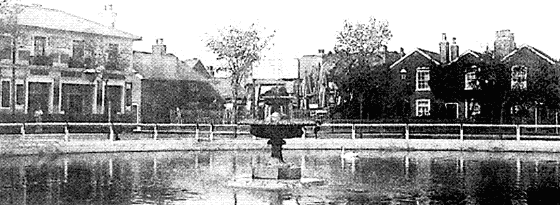
Dark Days at Gallows Green
Those visiting Thornton Heath pond today would be hard pressed to find any open expanse of water in the neighbourhood, other than the puddles which form after downpours of rain.
However it was not always the case. The vast area that now forms a large roundabout in front of the Wheatsheaf public house was once a giant pond after which the area took its name.
Some fascinating old photographs of the pond can be found in Raymond Wheeler's book images of Norbury, Thornton Heath and Broad Green, Published by Tempus.
The original heath covered around 36 acres stretching northwards from Thornton Heath pond towards Norbury. This was the common land for the manor of Norbury and at one time provided grazing capable of sustaining 500 sheep.

The heath was an isolated and desolate spot, with many footpads and highwaymen. To deter them, a gallows was erected opposite the pond and numerous brigands were executed there as punishment for their crimes and as a warning to others.
On March 31st 1722, a mass execution took place when six men were hanged there and the following year four felons dangled from their nooses at the same spot. The gibbet was a well known sight on the London Road and early maps refer to the area as Gallows Green.
In the 18th century, a coaching inn was established by the pond so travellers could quench their first with ale and spirits while their horses refreshed themselves at the pool.
The inn was called the Wheatsheaf, and also has a colourful history. It is said to be haunted by the ghost of a former landlords daughter who was brutally murdered there and her body dumped in the water.
The pond was the scene of numerous accidents, particularly at night or during foggy weather, when horse drawn vehicles would in advertently drive into the pond. In 1891, the Brighton mail coach floundered there, although locals blamed the accident on the drunken coachman rather than the fog.
To commemorate Queen Victoria's Jubilee in 1897, a large fountain was placed in the centre of the pond and new railings were erected around its perimeter. following these improvements the rural character of the pond diminished as the area was populated by growing numbers of middle class residents who were moving into the area.